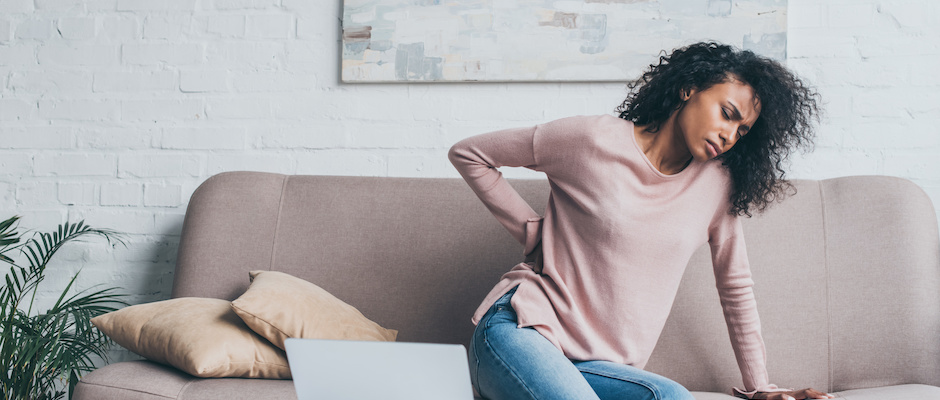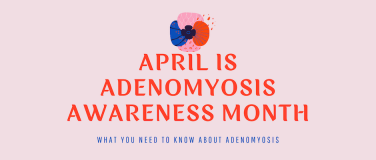
Leaving the library late one night during graduate school, Tiffany Elliott could barely walk. “I could take a couple of steps and I'd have to stop because it was such intense pain,” she recalls. When she eventually reached her car, she recognized that her pain would prevent her from driving safely. She went to the emergency department across the street, where a doctor suggested she might have endometriosis.
Pain was not unusual for Elliott. She first experienced pelvic pain in middle school, but didn’t receive a diagnosis of endometriosis and adenomyosis until years later. She recalls living with a daily pain level of 8 to 10 (the highest number on a standard pain scale), where her pain was so bad that she would sometimes pass out. “It used to just feel like there was a knife digging into me, like somebody stabbed me with a knife and then went wiggling it around,” she recalls. “I felt at times like my uterus was just going to fall out of me, it hurt so much.” Sometimes she couldn’t get out of bed, and was on the verge of losing her job. “People have no idea what that kind of pain just does to you and your ability to think and to function,” she says.
“A lot of times, women are normalized to say, ‘Well, you're a woman and you have a period. Periods hurt,’” says Nicole Donnellan, MD, director of the University of Pittsburgh Medical Center’s Endometriosis and Chronic Pelvic Pain Center. “It’s one thing if your period hurts for a little while, and you can take some Advil and make it feel better. But if you are having to miss school, work, life activities because of your period or pelvic pain in general—which can happen to lots of women—that’s not normal.”
The exact connection between endometriosis and pain is still not well understood. Pain levels are also difficult to compare in different people. Doctors often ask patients to indicate their pain on a 0 to 10 scale, using a lower number if they’re in less or no pain and a higher number for more pain.
Dr. Donnellan says these kinds of scales may be helpful to understand pain levels in one patient over time, but that because the numbers are relative, they can’t be compared among different people. She adds that while a pain scale is one tool, the impact of pain on a person’s daily functioning is more important to consider.
Researching pain
Recent research has focused on endometriosis-related pain to help understand the causes and identify potential solutions.
A 2018 study published in the international journal Acta Obstetricia et Gynecologica Scandinavica assessed pain mechanisms in endometriosis by examining pain thresholds in 92 women with and without ongoing pelvic pain. The researchers applied pressure, cold, and heat at several points on each participant’s abdomen, lower back, and leg, with the women indicating the moment at which they felt pain.
Compared to the other participants, the study found that the women with pelvic pain had significantly lower pain thresholds at all the locations. This was the case regardless of whether they had endometriosis, suggesting that pain was the defining factor rather than the presence of the disease.
The study suggested that the reduced pain thresholds may be related to a condition called central sensitization. This disorder, which may be caused by chronic pain, results in hypersensitivity to pain and other stimuli. As a result of its findings, the study recommended that women with persistent pelvic pain receive more in-depth treatment to help block the development of central sensitization.
Dr. Donnellan says that she’s seen potential cases of central sensitization in endometriosis patients who have surgery to remove all of the disease, but find that their pain still persists. And while those cases are the exception, she notes that they underscore the need for a multidisciplinary approach in treating endometriosis.
Much of endometriosis care is currently done in isolation from other specialties. By contrast, Dr. Donnellan points out, “Patients would never blink an eye when an orthopedic surgeon says you'll need surgery and intensive physical therapy.” Similarly, for endometriosis and chronic pelvic pain, she says there should be different specialties—a surgeon, a gynecologist, a physical therapist—working together to address different elements of the disease.
Relieving pain
If you’re dealing with endometriosis pain, caring for yourself at home may provide some relief. Over-the-counter pain relievers, heating pads, and hormone therapies like birth control pills may help with your symptoms. Lowering your stress levels, increasing exercise, and trying alternative treatments like acupuncture may also help you manage your pain and other symptoms.
Diet may play a role, as well. A 2020 research review published in Reproductive Biomedicine Online indicated that foods with anti-inflammatory or antioxidant properties, such as eggs, peanuts, berries, broccoli, and brussels sprouts, may help reduce endometriosis pain. On the other hand, the review found that it may help to avoid foods containing soy and gluten. However, more research is needed in this area.
For many women, treating the pain on their own may not be enough. If it gets to the point of missing work, or if the pain is affecting other parts of daily life, Dr. Donnellan encourages women to advocate for themselves with their doctor.
In this process, both Dr. Donnellan and Elliott emphasize the importance of finding a doctor who will listen and be empathetic. “I think a lot of patients aren't heard or believed. And a lot of their providers think they’re making it up,” says Dr. Donnellan. “But why would a young individual be sitting in a doctor’s office if she could be somewhere else?”
Elliott was finally able to have surgery that included a complete hysterectomy, which relieved most of her pain. She found her surgeon through an online support group, and recommends that other women dealing with endometriosis seek patient support groups and resources to learn more about the disease in order to advocate for themselves and receive the treatment they need.
“You need to have a doctor who knows what they're talking about when it comes to endometriosis,” she says. “If you don't get an answer, if you don't get somebody who's taking you seriously, find another person who will.”









